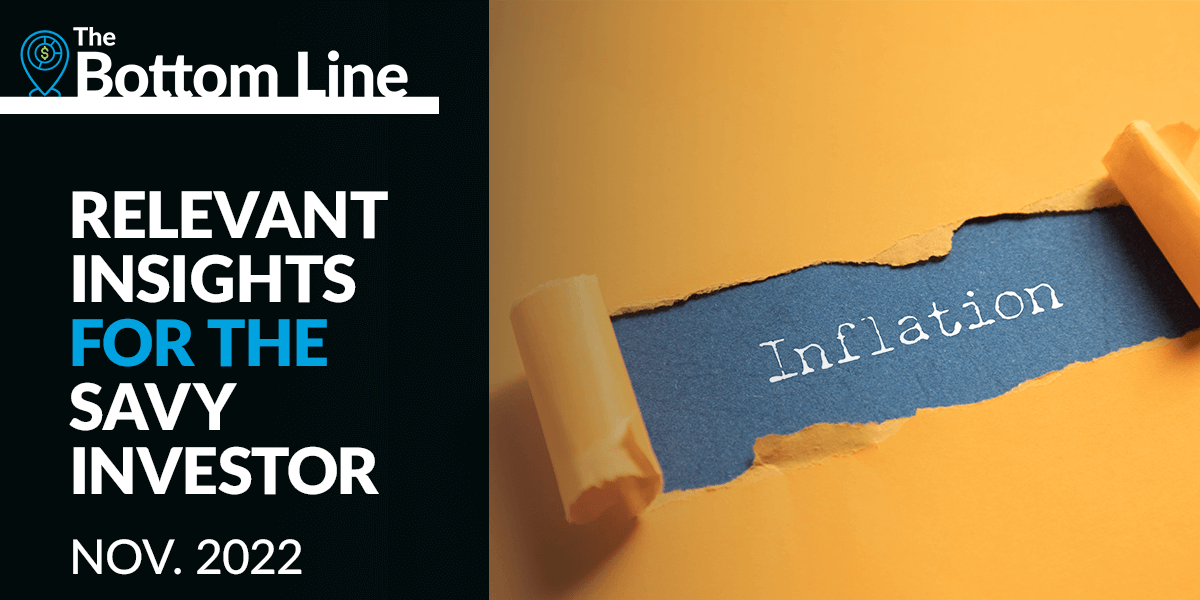

The Economic Slowdown Is Broadening
Data released over the past few weeks have shown that economic growth slowed in the last two months of 2022. Although parts of the economy started to moderate this past summer, it was in relatively small sectors (real estate, entertainment and technology), so the impact on overall growth was negligible. But now the slowdown is broadening to large parts of the economy, like consumer spending and manufacturing output, which adds to the conviction that the economy will enter into a recession this year.
The consumer has put on the brakes, and retail sales declined in the last two months of the year, offsetting the significant gain in October (chart 1).

Part of the decline can be attributed to the changing consumer preference to spend on services and away from goods. The retail sales report focused heavily on goods purchases, except for restaurant sales, which is a service. But there, restaurant sales declined in the year’s final two months, indicating that discretionary spending is under pressure (chart 2).

Manufacturing output has declined in the past year (chart 3).

The slowdown has been brought about by past dollar appreciation, weakening domestic and global demand for goods, higher borrowing costs and the fear of a recession. The weakness may continue; the ISM Manufacturing – New Orders index moved into the contraction territory (below 50) last summer and now stands at 45.2 (chart 4).

Offsetting the risk of entering a recession, or limiting the downside severity of a recession, is the resilient labor market. Despite well-publicized articles about layoffs in the tech sector, this economy has been averaging payroll gains of around a quarter of a million workers each month. The weekly claims for unemployment insurance, the “canary in the coal mine” indicator for weakness in the labor market, remains near record low levels. But the labor market is more nuanced than just that one indicator. At the same time, there has been a reduction in overtime and average workweek. Businesses are adjusting to slower demand by cutting hours instead of workers. The economic impact is the same: Reduced income will lead to reduced spending.
Forecasting the economy’s trajectory is difficult; there are some unknown variables. The most significant is how aggressive the Federal Reserve (Fed) needs to be in battling inflation, followed by the war’s progress in Ukraine and the strength in China’s reopened economy following the COVID lockdown. That said, the economy is slowing based on reduced consumer spending and declines in investment.
MARKET TRENDS
After a positive start to the year, market sentiment has grown more mixed, with investors beginning to shift their attention from inflation fears to concerns over the impact of slowing economic growth on corporate profits. Early indications from Q4 earnings season are that companies are increasingly feeling the weight of weaker demand and rising labor costs. We continue to believe market returns will be better in 2023, but volatility is likely to continue in the near term until economic and earnings data show signs of bottoming.
LABOR
Demand for workers is slowing; following strong hiring during the pandemic, the need for temporary workers and their wages has steadily declined since the summer.1
THE FED
The Fed is increasing interest rates but at smaller increments than in the past. This buys them time to study how previous rate increases are impacting the economy.2
HOUSING
Building permits have declined for eight straight months, indicating that future housing construction growth may be tepid.3
BUDGET DEFICIT
The US Treasury has hit the maximum amount they can borrow ($31.4 trillion). Next, Congress needs to approve an increase in the spending authority, a procedure that tends to bring out partisan politics.4
INFLATION
Since June, inflationary pressures have declined significantly, brought on by decreases in energy and goods. However, pricing pressure for services continues upward due to high labor costs.5
OIL
Energy prices have rallied in the past few weeks due in part to increasing demand from the reopening of China’s economy from COVID-19 restrictions.6
Sources
1. Bureau of Labor Statistics, December 2022
2. The Federal Reserve, December 2022
3. Commerce Department, December 2022
4. US Treasury, January 2023
5. Bureau of Labor Statistics, December 2022
6. Energy Information Administration – January 2023; Wall Street Journal – January 8, 2023 by Will Horner
Index Definitions
CPI: The Consumer Price Index (CPI) is a measure that e xamines the weighted average of prices of a bask et of consumer goods and services, such as transportation, food and medical care.
ISM: The term Institute for Supply Management (ISM) refers to a nonprofit supply management association. Established in 1915, it is the largest organization of its kind. It provides certification, development, education, and research for individuals and corporations in the supply management and purchasing professions.
The ISM manufacturing index, also known as the purchasing managers’ index (PMI), is a monthly indicator of U.S. economic activity based on a survey of purchasing managers at more than 300 manufacturing firms.
Diffusion Index: Used in technical analysis, a diffusion index measures the number of stocks that have advanced in price or are showing positive momentum. It is useful for determining the underlying strength of the stock market overall, as lots of stocks advancing show a strong market, while few(er) stocks advancing show a weaker market.
Important Information
The information presented does not involve the rendering of personalized investment, financial, legal, or tax advice. This presentation is not an offer to buy or sell, or a solicitation of any offer to buy or sell any of the securities mentioned herein.
Certain statements contained herein may constitute projections, forecasts and other forward-looking statements, which do not reflect actual results and are based primarily upon a hypothetical set of assumptions applied to certain historical financial information. Readers are cautioned that such forward-looking statements are not a guarantee of future results, involve risks and uncertainties, and actual results may differ materially from those statement. Certain information has been provided by third-party sources and, although believed to be reliable, it has not been independently verified and its accuracy or completeness cannot be guaranteed.
Any opinions, projections, forecasts, and forward-looking statements presented herein are valid as on the date of this document and are subject to change.
All investing is subject to risk, including the possible loss of the money you invest. As with any investment strategy, there is no guarantee that investment objectives will be met and investors may lose money. Diversification does not ensure a profit or protect against a loss in a declining market. Past performance is no guarantee of future performance.
City National Rochdale is a registered investment adviser and a wholly-owned subsidiary of City National Bank. City National Bank provides investment management services through its sub-advisory relationship with City National Rochdale.
Investing in international markets carries risks, such as currency fluctuation, regulatory risks, and economic and polit-ical instability.
Investing involves risk, including the loss of principal.
Non-deposit investment products are not FDIC insured, are not bank guaranteed, and may lose value.
Stay Informed.
Get our Insights delivered straight to your inbox.
Put our insights to work for you.
If you have a client with more than $1 million in investable assets and want to find out about the benefits of our intelligently personalized portfolio management, speak with an investment consultant near you today.
If you’re a high-net-worth client who's interested in adding an experienced investment manager to your financial team, learn more about working with us here.
